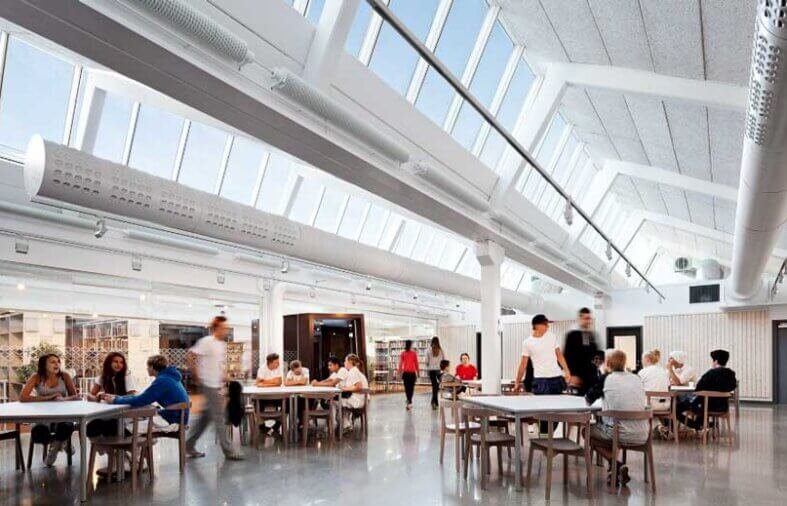Daylighting systems have become increasingly popular in recent years, particularly with new construction. These systems utilize natural light to light up the interiors of a building, providing various advantages other than pure aesthetics. Integrating daylighting solutions can lead to increased energy efficiency, cost savings, and wellness benefits for both the architect and building occupant. In this post, we briefly peruse the reasons why adding daylighting systems can benefit any new construction project.
Energy Efficiency
Energy efficiency is one of the main benefits of daylighting systems. When you use natural light, you will use less artificial lighting during the day. Reduced energy usage subsequently translates into lower bills from the utility provider. Daylighting has been demonstrated to reduce lighting energy costs in buildings by as much as 40%. A lower dependence on electric light means less indoor heat and less air conditioning during the warm months.
Improved Indoor Environment
Natural lighting significantly impacts the indoor climate. In most cases, spaces that have an abundance of natural light feel much more inviting and alive than those where an artificial source of light is the only option. This type of illumination supports a positive mood and productivity, which leads to improved mental well-being for those living within. Getting natural light exposure provides a natural cue for circadian rhythms, which makes for better sleep and health. Daylighting is used in schools, offices, and residential buildings that tend to have heightened occupant satisfaction.
Aesthetic Appeal
Daylighting serves a practical purpose but also has a visual role in embellishing structures. Spaces are infused with a dynamic beauty from natural light, which hits architectural details and reveals their materiality in a completely different way. As sunlight moves through the sky, the changing angles and intensity interact with the spaces in different ways, creating an ever-evolving scenery for the eye to experience. When architects create spaces with daylighting in mind, they can achieve visually appealing spaces that successfully invite and retain occupants.
Environmental Impact
Daylighting systems can effectively promote environmental conservation by reducing carbon footprints. The less reliance on artificial lighting and HVAC systems aligns with global sustainability goals. Sustainable and eco-development-based new construction projects are frequently certified and awarded, which can be a huge market differentiator. Embracing natural light is a sign of eco-consciousness in builders and architects.
Cost Effectiveness
Although the upfront cost of daylighting systems is relatively high, they are a cost-effective solution in the long term. Lower energy consumption means fewer operating costs, providing a return on investment in the long term. In addition, many governments and organizations offer incentives and rebates for energy-efficient technologies in building designs. The economic advantages can counteract initial costs, making daylighting systems an affordable addition to new constructions.
Design Flexibility
Architects have incredible design freedom with daylighting systems, especially when trying out new configurations and materials. Skylights, light shelves, and other building components can be customized to meet the particular needs of a project. This also allows for the flexible development of distinctive and innovative areas while optimally distributing light throughout interiors. Tailor-made solutions give all projects natural light while maintaining design intent and overall building performance.
Health Benefits
Natural light is essential to the physical well-being of building users. Sufficient exposure to sunlight will produce vitamin D, which is important for the bones and immune system function. Moreover, exposure to natural light can help reduce symptoms of seasonal affective disorder (SAD) and other mood disorders. Less absenteeism and greater productivity are often reported in buildings with daylighting systems because people feel more energized and focused in well-lit spaces.
Conclusion
It also provides benefits beyond energy savings and cost reductions to health and the environment during construction and renovations. Natural light allows builders and architects to create aesthetically pleasing and sustainable spaces. Because of the societal focus on sustainable building, daylighting systems will probably be as much a part of the architecture of the future as they are now. Daylighting solutions are a long-term investment in a bright future where buildings harmonize with nature, creating healthier and more productive environments for all.








